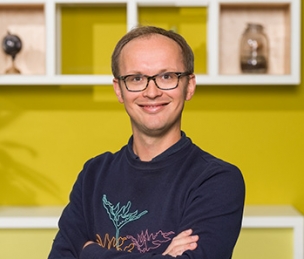Displaying 1 - 2 of 2
-
Dingemanse, M., & Floyd, S. (2014). Conversation across cultures. In N. J. Enfield, P. Kockelman, & J. Sidnell (
Eds. ), The Cambridge handbook of linguistic anthropology (pp. 447-480). Cambridge: Cambridge University Press. -
Enfield, N. J., Dingemanse, M., Baranova, J., Blythe, J., Brown, P., Dirksmeyer, T., Drew, P., Floyd, S., Gipper, S., Gisladottir, R. S., Hoymann, G., Kendrick, K. H., Levinson, S. C., Magyari, L., Manrique, E., Rossi, G., San Roque, L., & Torreira, F. (2013). Huh? What? – A first survey in 21 languages. In M. Hayashi, G. Raymond, & J. Sidnell (
Eds. ), Conversational repair and human understanding (pp. 343-380). New York: Cambridge University Press.Abstract
Introduction
A comparison of conversation in twenty-one languages from around the world reveals commonalities and differences in the way that people do open-class other-initiation of repair (Schegloff, Jefferson, and Sacks, 1977; Drew, 1997). We find that speakers of all of the spoken languages in the sample make use of a primary interjection strategy (in English it is Huh?), where the phonetic form of the interjection is strikingly similar across the languages: a monosyllable featuring an open non-back vowel [a, æ, ə, ʌ], often nasalized, usually with rising intonation and sometimes an [h-] onset. We also find that most of the languages have another strategy for open-class other-initiation of repair, namely the use of a question word (usually “what”). Here we find significantly more variation across the languages. The phonetic form of the question word involved is completely different from language to language: e.g., English [wɑt] versus Cha'palaa [ti] versus Duna [aki]. Furthermore, the grammatical structure in which the repair-initiating question word can or must be expressed varies within and across languages. In this chapter we present data on these two strategies – primary interjections like Huh? and question words like What? – with discussion of possible reasons for the similarities and differences across the languages. We explore some implications for the notion of repair as a system, in the context of research on the typology of language use.
The general outline of this chapter is as follows. We first discuss repair as a system across languages and then introduce the focus of the chapter: open-class other-initiation of repair. A discussion of the main findings follows, where we identify two alternative strategies in the data: an interjection strategy (Huh?) and a question word strategy (What?). Formal features and possible motivations are discussed for the interjection strategy and the question word strategy in order. A final section discusses bodily behavior including posture, eyebrow movements and eye gaze, both in spoken languages and in a sign language.

Share this page